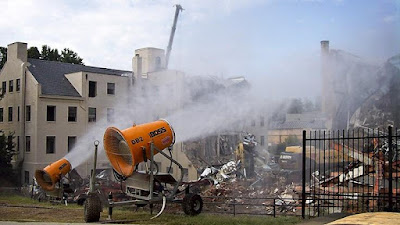Dust control is an important process used to provide clean air in a room or workplace. Particles that contaminate the air, such as bacteria, dust, and dirt, are removed during the dust control process, improving the air quality in that room. For the air filtration process, industrial air filters are used. To remove particles and improve air quality, dust control systems are most commonly used in the residential and commercial sectors. Furthermore, dust control systems have applications in a variety of industries.
The global dust control system market is estimated to account for US$ 13,813.4 Mn in terms of value by the end of 2019
Dust control systems collect impurities and dust particles from gas or air to improve the quality of air released from manufacturing processes. The system is made up of a filter, a blower, a filter cleaning system, and a removal system. With the help of components such as enclosures and hoods, these dust control systems effectively capture dust at the source. A dust collection system provides several advantages, the most important of which is a dust-free environment. There are two types of dust control systems in use: wet and dry.
The Clean Air Act (CAA) is a comprehensive federal law that empowers the Environmental Protection Agency (EPA) to set standards for air quality by regulating hazardous air pollutant emissions in order to protect public health. The agency implements a number of financial and technical programmes to protect the level of pollution in the air and control air pollution in the United States. As a result, the country's demand for dust control systems is expected to skyrocket in the coming years.
Clean air is critical for avoiding a variety of health issues, including respiratory diseases such as asthma. However, rapid industrialization in developing economies, combined with increased construction and mining activities, significantly contributes to air pollution, which is expected to drive demand for dust control systems over the forecast period.
Many governments are taking immense efforts to prevent and control air pollution by introducing numerous stringent regulations and standards for the environment and safety of workers, resulting in increased demand for highly efficient air pollution control equipment. This is subsequently anticipated to have a positive impact on the demand for dust control systems over the forecast period.



No comments:
Post a Comment